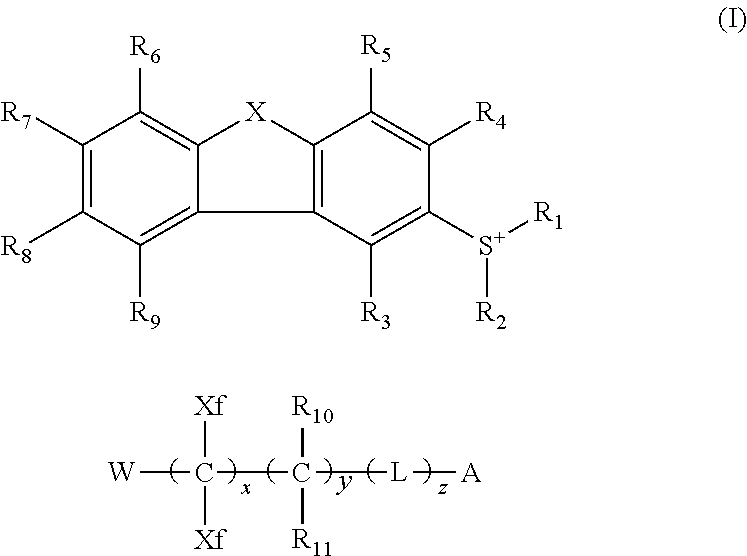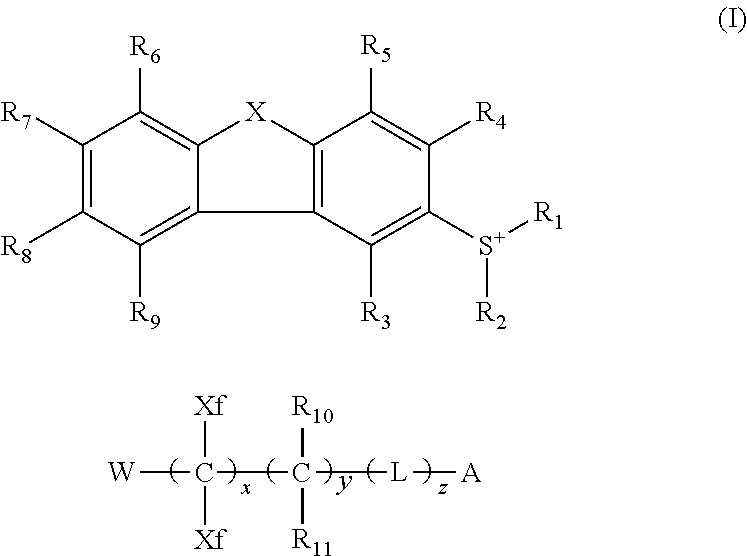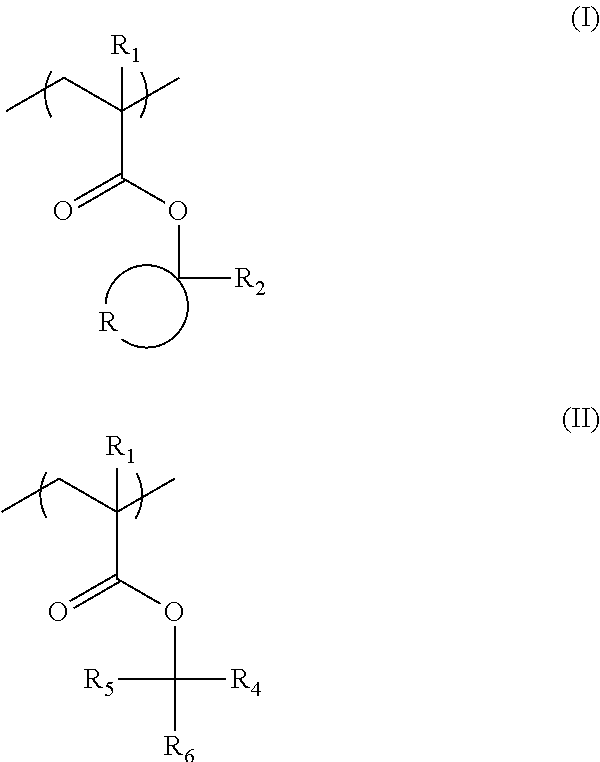Actinic-ray-sensitive or radiation-sensitive resin composition, and resist film and pattern forming method using the same composition
a technology of radiation-sensitive resin and resin composition, which is applied in the direction of photosensitive materials, instruments, photomechanical equipment, etc., can solve the problems of difficult to find an appropriate combination of resin and photoacid generator, and the chemical amplification type resist composition mentioned above is not satisfactory, and achieves excellent exposure latitude and low dissolution
- Summary
- Abstract
- Description
- Claims
- Application Information
AI Technical Summary
Benefits of technology
Problems solved by technology
Method used
Image
Examples
synthesis example 1
Synthesis of Compound A-1
1,1,2,2,3,3-hexafluoro-3-(piperidine-1-sulfonyl)propane-1-sulfonic acid 9-ethylcarbazol-2-yltetrahydrothiophenium
[0557]First, 3.0 g of 9-ethylcarbazole and 3.6 g of tetramethylene sulfoxide were dissolved in 120 ml of chloroform, and the solution was cooled to −30° C. under a nitrogen stream.
[0558]A solution of 7.2 g of a trifluoroacetic anhydride in 30 g of chloroform was dropped thereto over 30 minutes. The temperature of the mixed solution was raised to room temperature, followed by reaction for 4 hours, and 10.6 g of sodium 1,1,2,2,3,3-hexafluoro-3-(piperidine-1-sulfonyl)propane-1-sulfonate dissolved in 80 ml of acetonitrile / 20 ml of water was added thereto. The chloroform phase was washed with water and then concentrated to obtain crude crystals. The crystals were washed with cyclopentyl methyl ether to obtain 8.3 g of 1,1,2,2,3,3-hexafluoro-3-(piperidine-1-sulfonyl)propane-1-sulfonic acid 9-ethylcarbazol-2-yltetrahydrothiophenium (compound A-1).
[0559]1...
synthesis example 2
Synthesis of Resin A
[0561]Under a nitrogen stream, 40 g of cyclohexanone was charged in a three-necked flask and heated at 80° C. (Solvent 1). Monomers corresponding to the respective repeating units were dissolved in a molar ratio of 40 / 10 / 50 in cyclohexanone to prepare 22 mass % of a monomer solution (400 g), and a polymerization initiator V-601 (available from Wako Pure Chemical Industries, Ltd.) was added thereto and dissolved in a concentration of 7.2 mol % based on all monomers. The resulting solution was added dropwise to Solvent 1 over 6 hours. After the completion of dropwise addition, the reaction was further allowed to proceed at 80° C. for 2 hours. The reaction liquid was left standing to cool and then poured into 3,600 ml of heptane / 400 ml of ethyl acetate, and the resulting precipitate was collected by filtration and dried to obtain 74 g of Resin A. The polymer composition ratio as measured by NMR was 40 / 10 / 50. The weight average molecular weight of the obtained Resin ...
synthesis example 3
Synthesis of Hydrophobic Resin B-2
[0563]Monomers corresponding to the respective repeating units (starting from the left) of the above-exemplified hydrophobic resin B-2 were charged in a molar ratio of 30 / 70 and dissolved in propylene glycol monomethyl ether acetate (PGMEA) to prepare 450 g of a solution having a solid content concentration of 15 mass %. Subsequently, 1 mol % of a polymerization initiator V-60 (available from Wako Pure Chemical Industries, Ltd.) was added thereto. The resulting solution was added dropwise to 50 g of PGMEA heated to 100° C., under a nitrogen atmosphere over 6 hours. After the completion of dropwise addition, the reaction liquid was stirred for 2 hours. After the completion of the reaction, the reaction liquid was cooled to room temperature, and crystallized from 5 L of methanol. The thus precipitated white material was collected by filtration to recover a desired hydrophobic resin B-2.
[0564]The polymer composition ratio as measured by NMR was 30 / 70. ...
PUM
 Login to View More
Login to View More Abstract
Description
Claims
Application Information
 Login to View More
Login to View More - R&D
- Intellectual Property
- Life Sciences
- Materials
- Tech Scout
- Unparalleled Data Quality
- Higher Quality Content
- 60% Fewer Hallucinations
Browse by: Latest US Patents, China's latest patents, Technical Efficacy Thesaurus, Application Domain, Technology Topic, Popular Technical Reports.
© 2025 PatSnap. All rights reserved.Legal|Privacy policy|Modern Slavery Act Transparency Statement|Sitemap|About US| Contact US: help@patsnap.com



